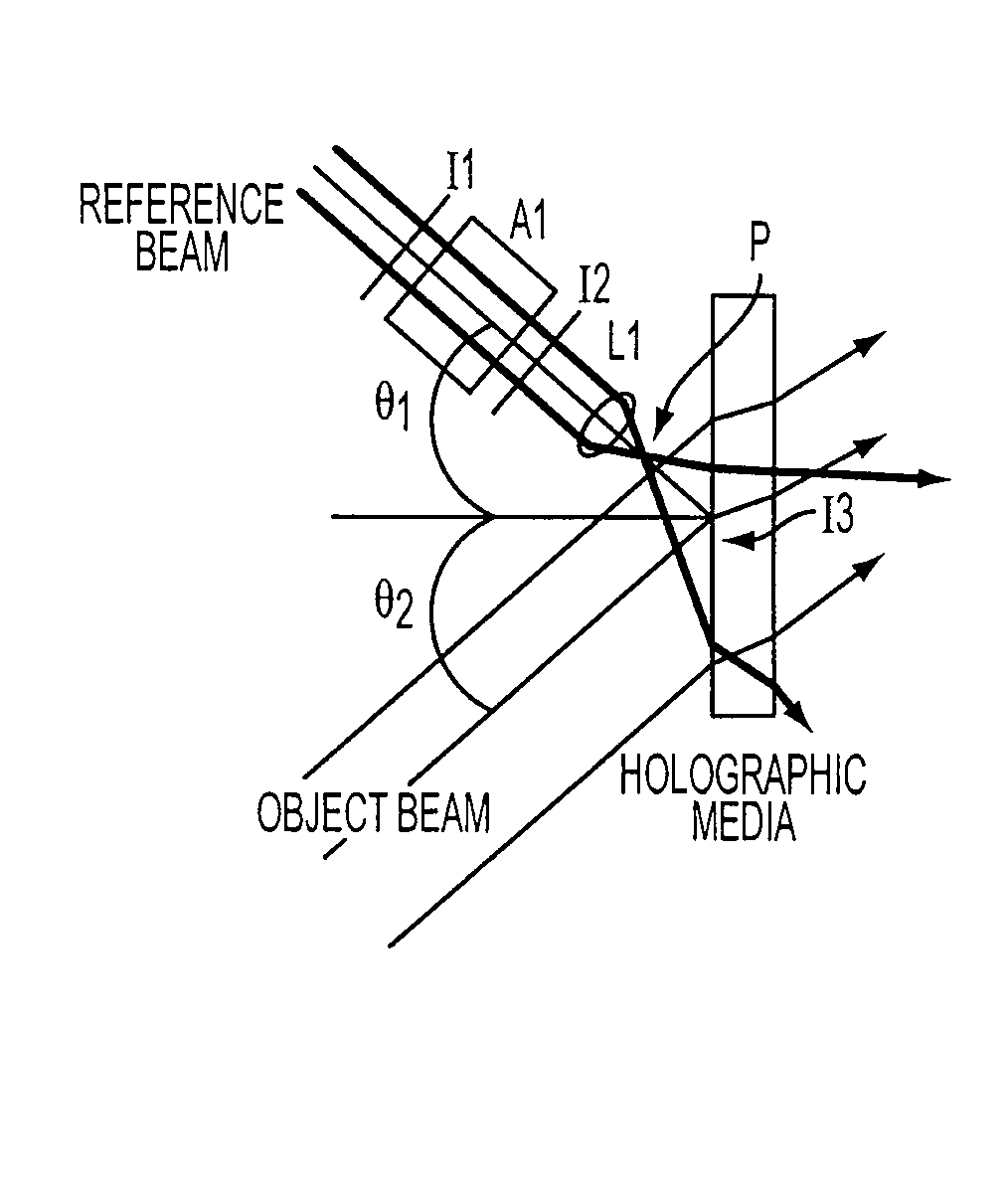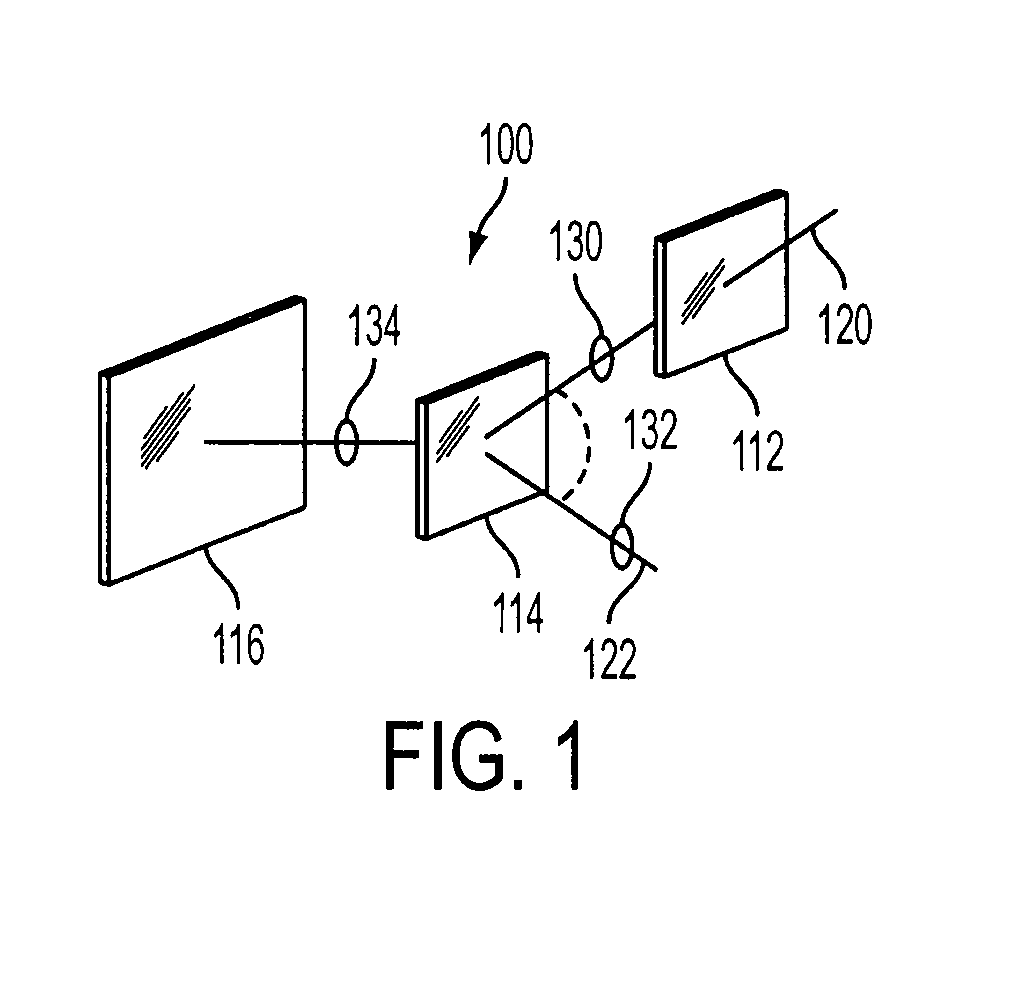Method for improved holographic recording using beam apodization
- Summary
- Abstract
- Description
- Claims
- Application Information
AI Technical Summary
Benefits of technology
Problems solved by technology
Method used
Image
Examples
Embodiment Construction
[0032]An HDSS is composed of an optical system that directs and shapes coherent optical beams to intersect at a surface or volume where the interference pattern is recorded. The hologram constitutes the recorded pattern in the media.
[0033]In HDSS, an entire page of information is stored at once as an optical interference pattern within an optical storage material by intersecting two coherent laser beams within the optical storage material. The first beam is called the “object beam,” which contains the information to be stored. The second beam is called the “reference beam.” The reference beam is often (but not necessarily) an unmodulated beam, preferably a spherical beam or a collimated beam with a planar wave front.
[0034]In this invention, a reference beam is modulated by an apodizer. A reference beam before modulation by the apodizer is referred to as an “incident reference beam” and after modulation as a “modulated reference beam.” In this invention, the term “apodizer” refers to...
PUM
 Login to View More
Login to View More Abstract
Description
Claims
Application Information
 Login to View More
Login to View More - Generate Ideas
- Intellectual Property
- Life Sciences
- Materials
- Tech Scout
- Unparalleled Data Quality
- Higher Quality Content
- 60% Fewer Hallucinations
Browse by: Latest US Patents, China's latest patents, Technical Efficacy Thesaurus, Application Domain, Technology Topic, Popular Technical Reports.
© 2025 PatSnap. All rights reserved.Legal|Privacy policy|Modern Slavery Act Transparency Statement|Sitemap|About US| Contact US: help@patsnap.com



